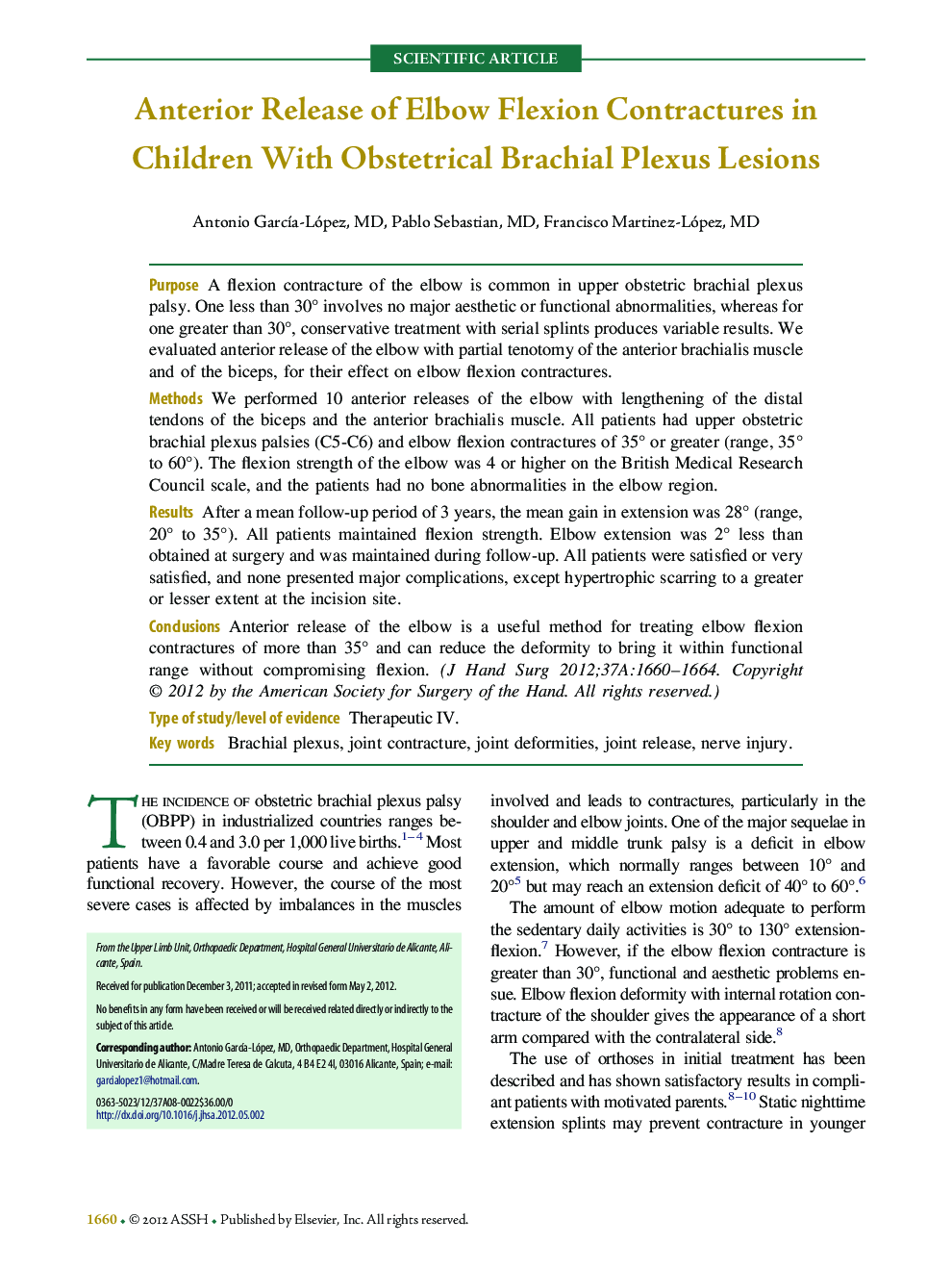| کد مقاله | کد نشریه | سال انتشار | مقاله انگلیسی | نسخه تمام متن |
|---|---|---|---|---|
| 4067550 | 1604392 | 2012 | 5 صفحه PDF | دانلود رایگان |

PurposeA flexion contracture of the elbow is common in upper obstetric brachial plexus palsy. One less than 30° involves no major aesthetic or functional abnormalities, whereas for one greater than 30°, conservative treatment with serial splints produces variable results. We evaluated anterior release of the elbow with partial tenotomy of the anterior brachialis muscle and of the biceps, for their effect on elbow flexion contractures.MethodsWe performed 10 anterior releases of the elbow with lengthening of the distal tendons of the biceps and the anterior brachialis muscle. All patients had upper obstetric brachial plexus palsies (C5-C6) and elbow flexion contractures of 35° or greater (range, 35° to 60°). The flexion strength of the elbow was 4 or higher on the British Medical Research Council scale, and the patients had no bone abnormalities in the elbow region.ResultsAfter a mean follow-up period of 3 years, the mean gain in extension was 28° (range, 20° to 35°). All patients maintained flexion strength. Elbow extension was 2° less than obtained at surgery and was maintained during follow-up. All patients were satisfied or very satisfied, and none presented major complications, except hypertrophic scarring to a greater or lesser extent at the incision site.ConclusionsAnterior release of the elbow is a useful method for treating elbow flexion contractures of more than 35° and can reduce the deformity to bring it within functional range without compromising flexion.Type of study/level of evidenceTherapeutic IV.
Journal: The Journal of Hand Surgery - Volume 37, Issue 8, August 2012, Pages 1660–1664